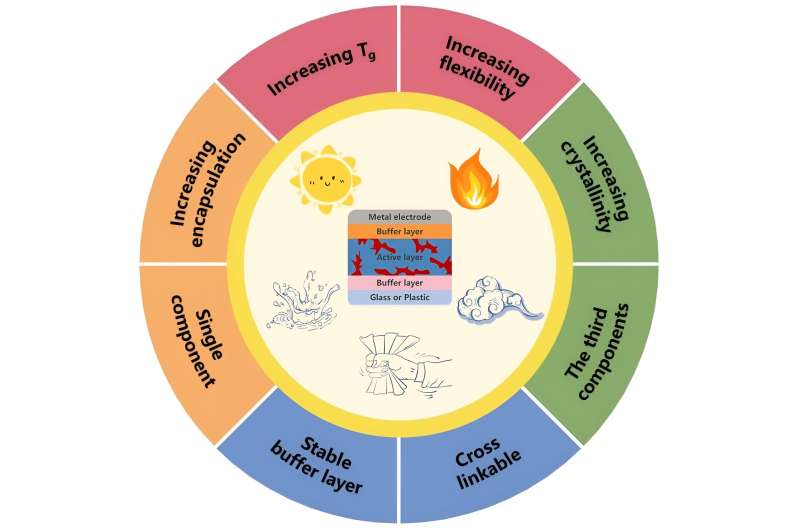This article has been reviewed according to Science X's editorial process and policies. Editors have highlighted the following attributes while ensuring the content's credibility:
fact-checked
trusted source
proofread
Review examines improvements in organic solar cell stability

The development of renewable and clean energy has been recognized as a crucial solution to the problems of deteriorating environment. Owing to the advantages of light weight, transparency, flexibility, and low cost, organic solar cells (OSCs) have attracted increasing attention in the field of clean solar energy.
OSCs have a broad application prospect in photovoltaic building integration, portable flexible electronic devices and Internet of Things devices. However, the relatively low stability has hindered the commercial applications of OSCs.
Based on the previous research on high-performance OSCs, Prof. Ge Ziyi's research group from the Ningbo Institute of Materials Technology and Engineering (NIMTE) of the Chinese Academy of Sciences has systematically summarized, classified and discussed the research progress on the stability of OSCs in the past three years.
The study was published in Chemical Society Reviews.
Various strategies to improve device stability through material design were reviewed, including the development of novel donors, acceptors, single-component materials, third components, hole transport materials, and electron transport materials.
Additionally, versatile methods used to improve the stability of OSCs through device engineering, such as interlayer modification, processing optimization, and electrode modification, were summarized. The current advances of OSCs were also compared and discussed in detail, in terms of material-morphology-stability relationships, material stability, light stability, air stability, thermal stability, and mechanical stability.
The current development challenges and unsolved issues of highly stable OSCs were illustrated, such as the device degradation mechanism, universal physical theory model, environmental impact, standardization of stability testing procedures, lifetime, etc. Relevant suggestions for the synthesis of highly stable OSCs were also provided in this review, contributing to the future commercial applications of OSCs.
More information: Pengfei Ding et al, Stability of organic solar cells: toward commercial applications, Chemical Society Reviews (2024). DOI: 10.1039/D3CS00492A


















